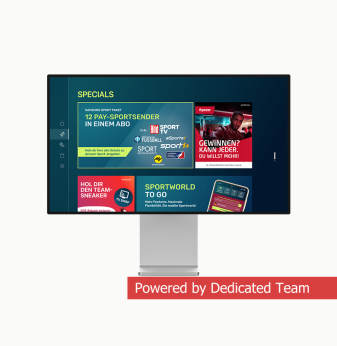The Future of OTT Platforms: Trends, Tech, and User Expectations

Over-the-top (OTT) platforms have radically transformed how people consume video content. What started as a disruptive alternative to traditional broadcasting has evolved into a dominant form of media delivery across the globe. As we approach 2026, OTT services are being reshaped by technological advances, shifting user behaviors, and new business models.
In this article, we explore the key trends, technologies, and user expectations defining the future of OTT platforms. Whether you are a media company, tech startup, or hardware manufacturer, understanding these developments is crucial to building resilient and scalable streaming solutions.
Why is the OTT Market Still Growing?
Despite market saturation in some regions, OTT platforms continue to grow due to several factors:
- Mobile-first consumption in developing countries
- Original content investment by global and regional players
- Personalized user experiences powered by AI and ML
- Cord-cutting trends driving traditional TV users to digital
According to PwC's Global Entertainment & Media Outlook, OTT video revenues are expected to surpass $120 billion by 2026.
1. Personalization Powered by AI and ML
One of the strongest differentiators in OTT services is the ability to personalize content and recommendations.
AI is now used to analyze:
- Viewing history and behavior patterns
- Device type and time of access
- Content genre preferences and engagement time
In 2025 and beyond, expect more granular segmentation based on emotional analytics and biometric inputs, particularly in wearable-connected environments. Recommender engines will evolve to predict not just what users want to watch, but when and how.
Answering the Question: How is AI being used to improve video streaming services?
- Predictive content recommendations
- Adaptive bitrate streaming for better QoE
- Automated content tagging and scene recognition
- Churn prediction and content strategy optimization
2. Cloud-Native Architectures and Microservices
Modern OTT platforms are being rebuilt using microservices running on scalable cloud infrastructure. This allows:
- Faster deployment of features
- Elastic scaling during peak loads (e.g., sports events)
- Improved fault tolerance and failover support
Containerization using Docker and orchestration via Kubernetes are now standard in new platform architectures.
What are the biggest challenges in OTT platform scalability?
- Managing sudden traffic spikes (e.g., viral content)
- Ensuring consistent performance across regions
- Handling multi-device concurrency and session states
- Maintaining low latency during live events
3. Ultra-Low Latency and Real-Time Interactivity
Live content is becoming a primary growth area — from sports to e-commerce streaming. Viewers expect real-time interactions such as:
- Live chat, polls, and synchronized reactions
- Multi-camera angle selection
- Real-time betting and purchase integrations
New protocols like WebRTC, SRT (Secure Reliable Transport), and CMAF low-latency HLS are making these features viable at scale.
4. The Shift to AVOD, FAST, and Hybrid Models
Subscription fatigue is driving viewers toward free content with ads. OTT players are expanding into:
- AVOD (Ad-supported Video On Demand)
- FAST (Free Ad-supported Streaming TV)
- Hybrid SVOD + AVOD models
Dynamic ad insertion (DAI), context-aware targeting, and programmatic ad platforms are now essential components of OTT monetization.
5. Multi-Platform Content Delivery and Edge Caching
OTT content must be accessible on:
- Smart TVs and STBs
- Mobile apps (iOS, Android)
- Browsers and progressive web apps
- Game consoles and VR headsets
To reduce load times and latency, edge caching using CDNs and AI-powered prefetching strategies are being widely adopted.
6. Accessibility and Inclusive UX
Regulatory pressure and user demand are driving improvements in accessibility:
- Automated subtitling and dubbing using AI
- UI features for visually or hearing-impaired users
- Language personalization and voice navigation
Platforms that invest in inclusive UX will see higher engagement and retention across diverse user groups.
7. Security, Privacy, and Compliance
With growing concerns about data usage and piracy, OTT platforms must prioritize:
- Multi-DRM solutions (Widevine, PlayReady, FairPlay)
- Watermarking and forensic tracing
- GDPR, CCPA, and regional compliance mechanisms
- User consent management tools
Blockchain is also being tested for content rights management and revenue sharing transparency.
8. Role of 5G and Future Network Technologies
5G rollout is transforming streaming by enabling:
- Higher bandwidth for 4K/8K content
- Edge computing for real-time analytics and personalization
- Enhanced mobile streaming in crowded or mobile scenarios
6G concepts and satellite-based broadband (e.g., Starlink) may further extend OTT reach in remote or rural areas.
9. Integration with Smart Home and IoT Devices
OTT is becoming a part of the connected lifestyle. Integration trends include:
- Cross-device synchronization (e.g., starting content on a TV, continuing on a phone)
- Smart speakers for content search and playback
- Ambient computing: adapting volume and screen brightness based on environment
10. Emerging Formats: XR, VR, and Immersive Media
Immersive content is gaining traction, especially among Gen Z:
- Virtual concerts and sports experiences
- Interactive storytelling in VR environments
- 360° video support with spatial audio
These formats demand high-performance hardware, specialized codecs (e.g., MPEG-I), and GPU acceleration.

Preparing for the Next Phase of OTT Evolution
The OTT industry is evolving beyond "just streaming." Future-ready platforms will be those that combine technology innovation with a deep understanding of user behavior.
Whether you're building a white-label OTT platform, an embedded system for a smart TV, or a mobile-first streaming app, aligning with the trends above will help ensure:
- Faster time to market
- Competitive differentiation
- Higher user satisfaction
Promwad's Role in OTT Ecosystem Development
At Promwad, we help companies build robust video streaming solutions:
- Embedded design: STBs, HDMI dongles, smart displays
- Media software: STB firmware, player apps, transcoding tools
- UI/UX design for smart home and cross-platform use
- Cloud backend development and DevOps pipelines
We bring 20+ years of engineering experience across broadcasting, video-on-demand, and real-time streaming sectors.
Let’s build the next generation of OTT together.
Contact us to discuss your media tech project.
Our Case Studies in OTT








